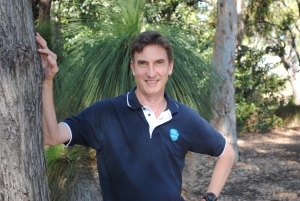Understand gaps to increase wheat crop yields
Author: media@grdc.com.au | Date: 27 Feb 2020

Insufficient nitrogen is one of the key reasons behind wheat crops not reaching their full yield potential, but a multi-layered approach is required to increase yields and reduce the size of the ‘gap’.
This is one of the key messages from a nationwide study investigating the yield gap in Australia, which CSIRO principal research scientist Roger Lawes discussed at the Grains Research and Development Corporation (GRDC) Grains Research Update, Perth, that was held at Crown Perth on February 24 and 25.
The GRDC National Paddock Survey closely monitored 250 paddocks for four years (2015-2018) to quantify the gap between the yield potential based on rainfall and the actual grower yield, and to understand the cause of this gap.
A ‘yield gap calculator’ was developed to indicate the key agronomic factors that contribute to the yield gap including weeds and diseases, previous crop, nitrogen and other variables.
Dr Lawes said of the 13 different ‘types’ of yield gap identified through the survey, four were evident in Western Australia and addressing these were key to maximising crop potential.
“The most important variable driving yield gaps was the yield potential, with significant gaps evident when the yield potential exceeded 4.8 tonnes per hectare,” he said.
“The inference is that the higher the rainfall, the higher the yield potential and yield gap, with growers less likely to capitalise on favourable seasons.”
The importance of the timing of the rainfall was also highlighted, with more rainfall in the growing season causing a larger yield gap.
“Residual soil water at harvest points to late rainfall, which could lead to either an unused water resource, the onset of severe pathogens that are not always managed, or flooding,” Dr Lawes said.
The second-most important variable for crops in the western region was nitrogen deficiency, with this factor contributing 30 per cent to the yield gap in these paddocks.
“This confirms that producers are not achieving yield potential due to nitrogen deficiency and are under-applying nitrogen when situations could warrant applying more,” Dr Lawes said.
In addition, in some situations, the previous crop was the next most important driver, which highlights the importance of crop rotation.
Other variables that were associated with yield gaps in localised situations included free-living nematodes, the region, the amount of nitrogen at harvest, yellow leaf spot, nitrogen at sowing, the root disease score of the seminal roots and Fusarium crown rot DNA concentrations measured in the soil.
In Australia’s western and southern cropping regions, 42 per cent of wheat crops had yield gaps greater than 0.8t/ha, while in the northern region, only 27 per cent of wheat crops had yield gaps greater than 0.8t/ha
Dr Lawes said the GRDC National Paddock Survey and yield gap analysis have demonstrated that while yield gaps occur in one in three paddocks, this is more likely to occur when yield potentials are high and nitrogen supply is inadequate.
“These problems can be compounded by cereal-dominant crop rotations and diseases such as Fusarium crown rot, Pythium, Pratylenchus species, yellow leaf spot and Rhizoctonia root rot,” he said.
“Importantly, sound crop rotation does not necessarily remove or reduce the disease risk in high-yielding situations.”
The Updates paper ‘The yield gap calculator and implications of the national paddock survey for Western Australia’, co-authored by Dr Lawes, is available on the GRDC website.
For information or to register for regional GRDC Grains Research Update events, that follow the Perth event, visit the GRDC website, or contact convenor the Grain Industry Association of WA (GIWA) on 08 6262 2128 or visit researchupdates@giwa.org.au
Contact Details
For Interviews
Roger Lawes, Principal Research Scientist, CSIRO
08 9333 6455
roger.lawes@csiro.au
Contact
media@grdc.com.au – West
0427 189 827
media@grdc.com.au
GRDC Project Code: BWD00025,
Was this page helpful?
YOUR FEEDBACK
